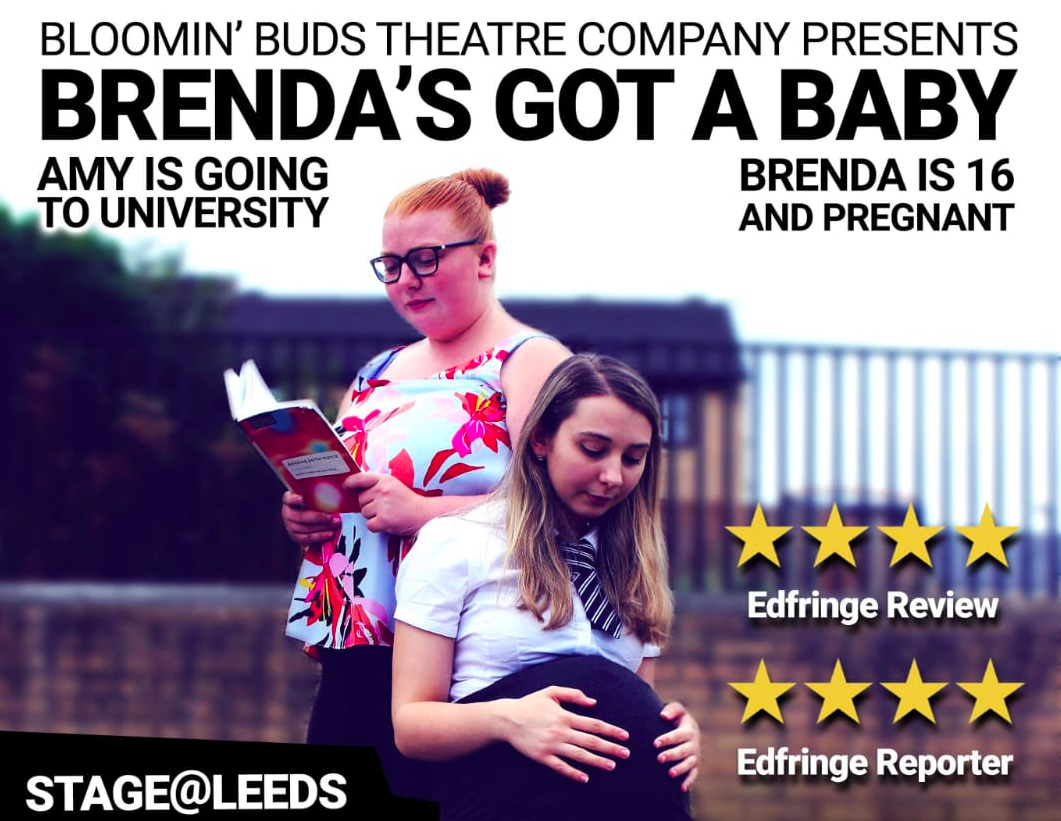Brenda’s Got a Baby is a spectacular piece of theatre, exploring how class dynamics play out in a working class community and at a Russell Group university. Whilst some of the dialogue and characterisation can be quite clumsy, the talent of the director and powerful message more than make up for any flaws. If this is anything to go by, Bloomin’ Buds’ brand of social commentary through drama will soon be gracing stages far more hallowed than that of our university.
Brenda’s Got a Baby is a verbatim play, which means much of the narrative is constructed from the precise words spoken by people interviewed about the topic. In this case, interviews were conducted with a group of thirty working class women whose experiences, alongside those of the director (Katie Mahon, who also plays Amy), shape the story. Bloomin’ Buds’ current work in progress, about access to support for mental health in working class communities, looks set to cement Mahon’s status as a particularly capable playwright and performer with a remarkable dedication to her working class roots.
The play follows the lives of two sisters, Amy and Brenda. Within the first 5 minutes we’re presented with a scene in which sixteen year old Brenda and eighteen year old Amy find out that one will be heading to university whilst the other has fallen pregnant. This scene manages to feel real enough to be moving, despite its predictability.
Some dialogue, for example Brenda cycling through reasons she couldn’t get pregnant (“You can’t get pregnant if the girl is on top!”), whilst being corrected by Amy, felt like a heavy handed attempt to establish the characters early on. Other examples, like Brenda’s declaration that she’d like a baby because “everyone’s got one!” felt a little crass. That’s but a footnote though, when it comes to the rest of the play. Aside from the deeply impactful narrative, the resourcefulness involved in the production shone throughout. The use of simply a pop music track to denote a range of different locations transported the audience effortlessly from nightclubs to bedrooms in terraced houses.
Most striking, though, is the format itself. The play takes place across a four year period in the lives of the sisters, which is made up of a string of short scenes involving the two. Interwoven with these scenes there are extracts of audio from the interviews, the contents of which are then reflected in the performed scenes. This effectively and unavoidably links the difficulties in the play to the lived realities of working class women in Britain, and as a result the show serves as a call to arms as much as it does an evening of entertainment.
Don’t just take my word for it, or that of any number of the wide range of critics applauding it, go and see it yourself. A complex issue has been discussed maturely and effectively, tied up in a narrative as spellbinding as it is familiar. Make sure you don’t miss out.
Charley Weldrick
Image Courtesy of Bloomin’ Buds Theatre Company

